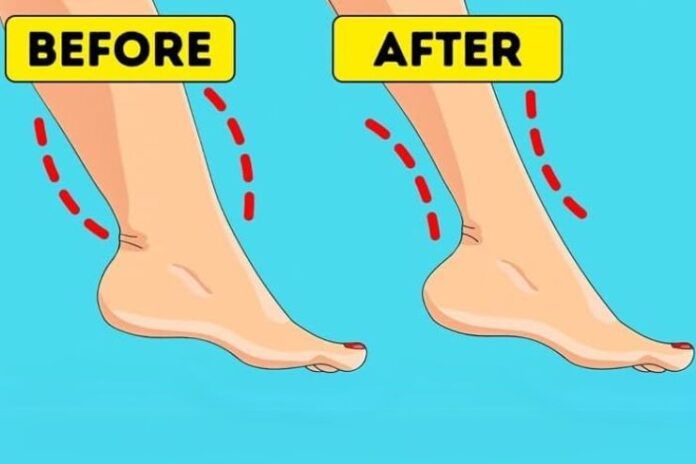Affiliate Disclaimer
Some links in this article are affiliate links. We may earn a small commission if you make a purchase through these links, at no extra cost to you. We only recommend products we find useful to our readersMany people are concerned about cankles, which are a phrase used to indicate the lack of definition between the calf and ankle. This region may seem thick or puffy, resulting in a less toned leg form. Although they may appear harmless, cankles can have an impact on your self-esteem and confidence.
What, then, is the reason for this condition? The most frequent causes are weight gain, which can result in excess fat accumulating around the ankles, and heredity, where a tendency toward thicker lower legs runs in families. Furthermore, poor circulation and muscular tone in the lower legs might result from a sedentary lifestyle with minimal exercise.
Toning the legs with specific activities can significantly reduce the appearance of cankles. It not only increases circulation and general health, but it also gives your legs more definition, which provides you with a more sculpted, self-assured look. We have aimed to include all essential details about cankles, such as their causes and prevention strategies.
Causes of Cankles
If you have cankles, it’s a good idea to try to identify the cause, as there are several possible causes. They’re hard to eliminate, and it’s good to know that you might need assistance if you’re fighting genetics or other fights. The following conditions may result in or exacerbate a lack of distinction between the lower leg and ankle:
1. Genetics
Occurring of cankles is possible if you have a positive genetic pool of it in your family. Unfortunately, you cannot change your genetic makeup. Fat storage can take place on your ankles. Additionally, fat-reducing techniques do not reduce fat deposits.
2. Lifestyle
Daily routines and habits might cause ankle edema. Consuming diets heavy in salt might raise the risk of edema and cause fluid retention. Additionally, edema is more common in overweight individuals. Foot and lower leg swelling can also result from prolonged standing or walking, particularly in warm weather.
3. Injury
When you injure your foot, ankle, or leg, the area may begin to swell, giving the appearance of a cankle. Ankle sprains and strains frequently result in swelling. One Osteochondral defect (OCD) can specifically result from injury to the talus, the ankle bone. Layers of the cartilage may blister or break as a result of these injuries. Lesions that resemble cysts may also form in the bone. Ankle discomfort, edema, and instability may arise from this.
4. Pregnancy or Complications of Pregnancy
As blood volume rises and the body retains more fluid, many pregnant women experience edema in their lower legs. However, excessive ankle and foot edema may indicate preeclampsia, a disorder marked by elevated blood pressure, usually after the twentieth week.
Treatment for Cankles
The cause of cankles determines the course of treatment.
Individuals who are genetically predisposed to bigger ankles won’t need medical care. However, depending on what caused the swelling, people with swollen ankles could need therapy.
- Wearing stockings or compression socks.
- Receiving a massage for lymphatic drainage to unclog obstructed lymph nodes.
- Reducing salty foods or eating a low-salt diet.
- Using a diuretic (with your doctor’s permission) can assist lessen water retention.
- When you’re lying down, raise your legs on a pillow.
- Perform leg movements to assist in returning fluid from the legs to the heart.
- Avoid prolonged sitting and moving about a lot, whether working or traveling.
Exercises to Get Rid of Cankles
Try the exercises given below to treat the condition of the cankles.
1. Weighted calf raises
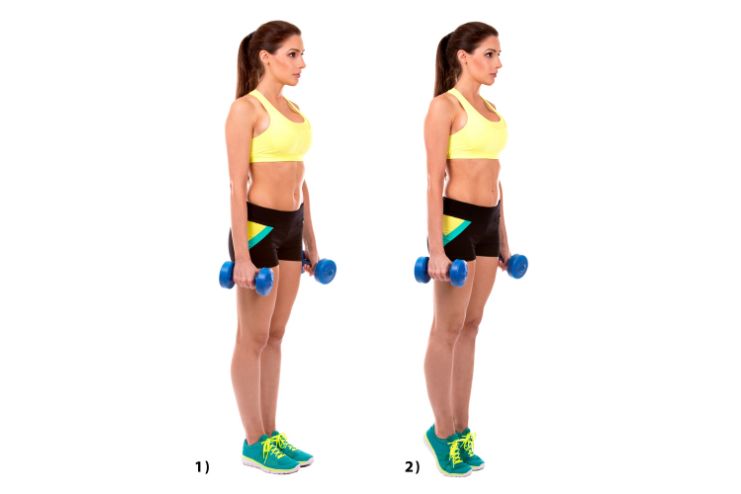
- Stand straight, taking a distance between your legs. Keep dumbbells on both your hands, and keep your arms extended.
- Put all your weight on the balls of the feet.
- Now, raise your heels by pushing your body upward.
- Hold it there for a few seconds.
- Bring your heels back on the floor.
- Repeat this procedure.
- Keep your legs slightly in a bending position. Avoid keeping them in a locked position.
- Perform this for 15 repetitions in 3 sets. You can adjust the weights if required.
2. Stair calf raises
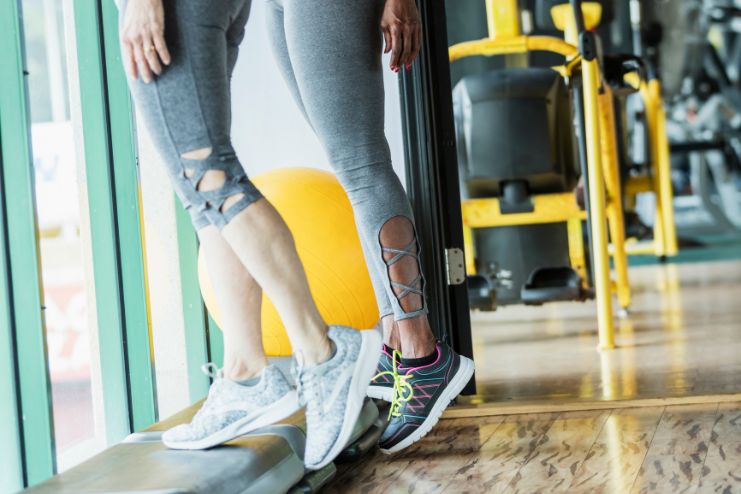
- Stand on the edge of the stairs on your toes with your heels out.
- Put all the weight on the balls of the feet.
- Now, push your body upward and elevate your heels.
- Hold the position for a few seconds.
- Bring yourself back to the original position.
- Repeat the methods.
- Avoid locking of knees and keep them in a slightly bending position.
- Perform 20 repetitions in 3 sets.
3. Seated calf raises
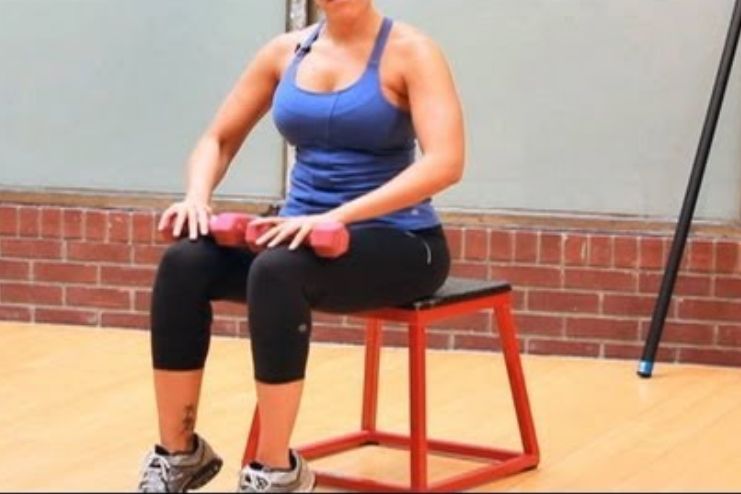
- In a chair, sit comfortably with dumbbells resting on the thighs.
- Put pressure on your toes to elevate your heels and lift the weight upward. Hold this position for a while.
- Bring your heels back on the floor.
- Keep the overall activity controlled with the help of weights on your thighs.
- Perform the exercise in 20 repetitions in 3 sets.
4. Lunge calf raise
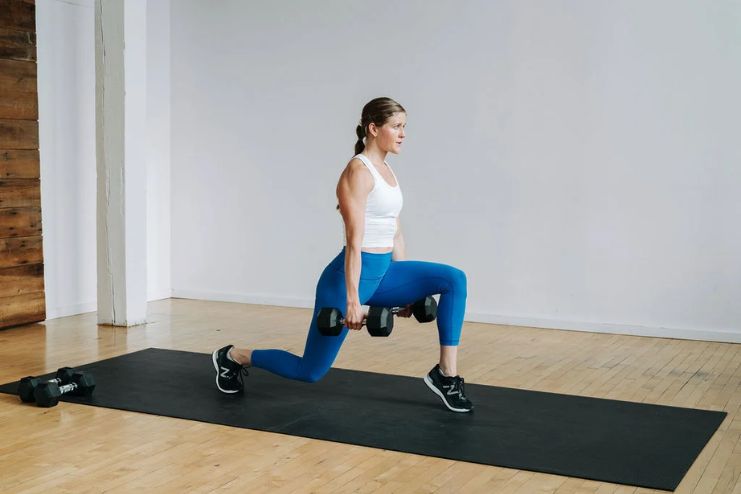
- Stand on the floor by keeping your weights by your side.
- Take a big step forward and best fit both legs at 90 90-degree angle.
- Elevate the heel of your front foot a bit.
- Bring the heel back to the floor.
- Repeat the same with your other leg well.
- Perform ten repetitions in 3 sets.
5. In Place High-Knee Jogging
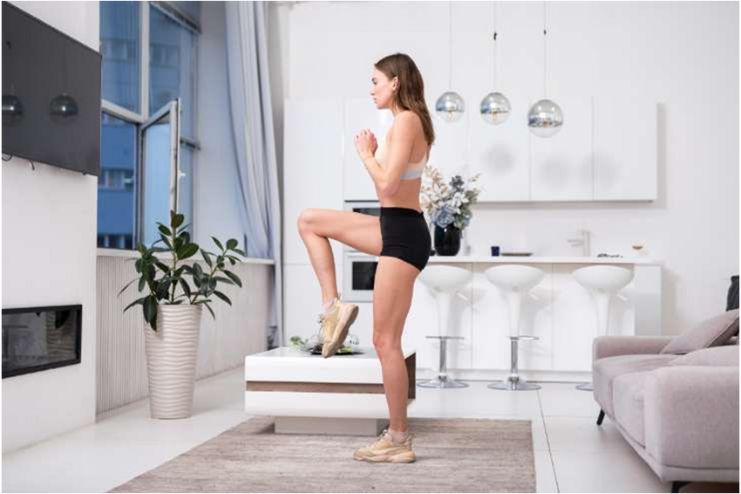
- Take a strong posture with your arms at your sides, your back straight, your shoulders relaxed, and your feet shoulder-width apart.
- Swing your right arm forward at a 90-degree angle as you raise your left leg to knee height, maintaining your thigh parallel to the floor.
- Swing your left arm in unison as you lower the left leg and elevate your right one.
- As in jogging, alternate your arms and legs rhythmically while maintaining controlled motions and high knees.
- To keep your balance during the workout, stand up straight, contract your core, and refrain from bending.
- Aim for a jogging pace by starting out slowly and then increasing your speed.
- Perform 20 repetitions every set, extending the time or pace as your stamina increases.
6. Jumping ropes
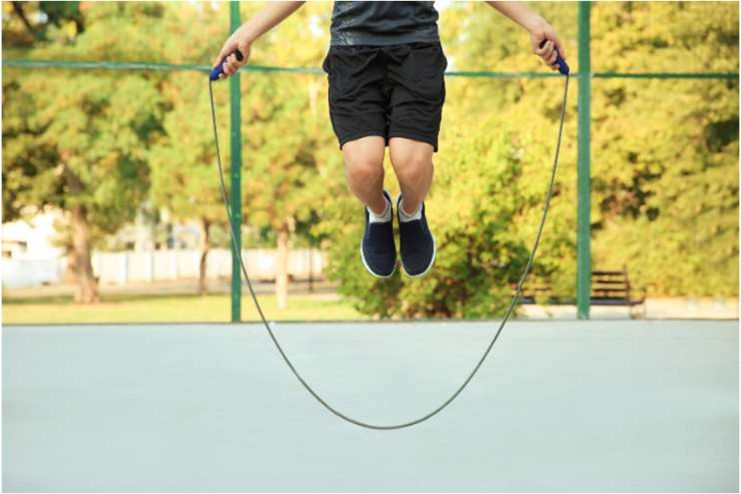
- While jumping on ropes, ensure that the rope is passing under your feet
- Keep the elbows close to your body.
- Your heels should not touch the ground.
- Perform five sets of 1-minute jumping and take a rest of 30-60 seconds in between.
7. Resistance Band Exercise
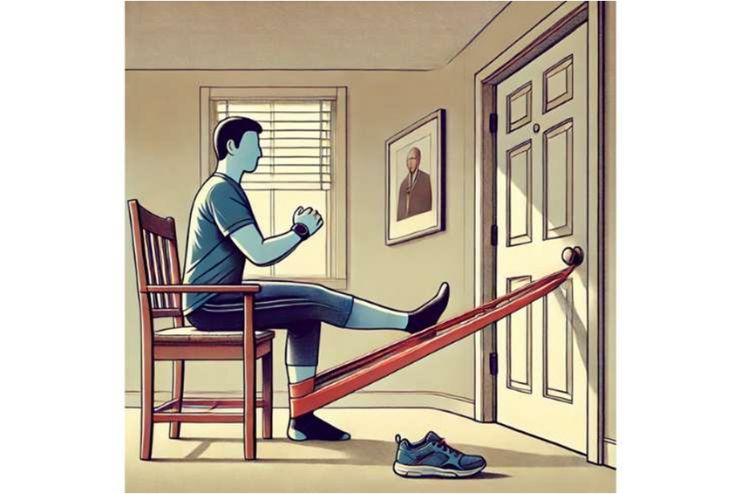
- Take a seat in a chair facing a door on your right.
- After looping a band around the ball of your right foot, secure the ends in the door to prevent them from moving.
- Move your right foot inside to the left and slowly back out again while keeping your knee and heel on the ground.
- Do the same with your left leg.
8. Balance with a Single Leg Pillow
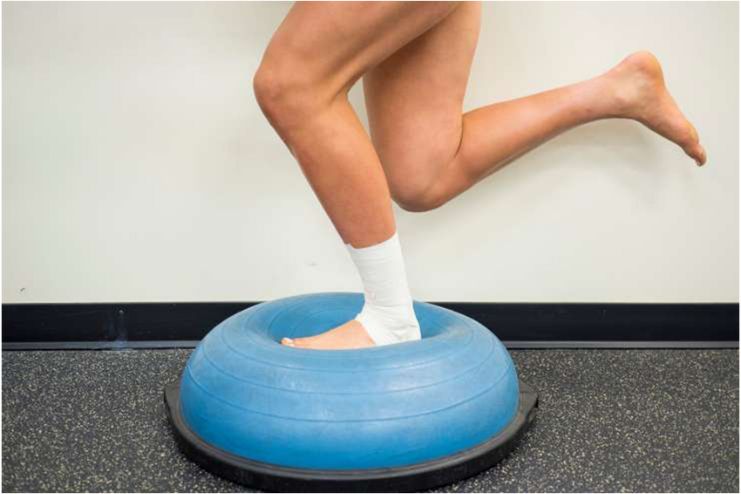
- Balance on one leg while standing on a toss pill. Your ankle’s muscles and tendons will have to work harder to maintain the balance of your body because of the instability.
- Switch your legs after 30 seconds or as long as you can hold.
9. The Nordic Curl
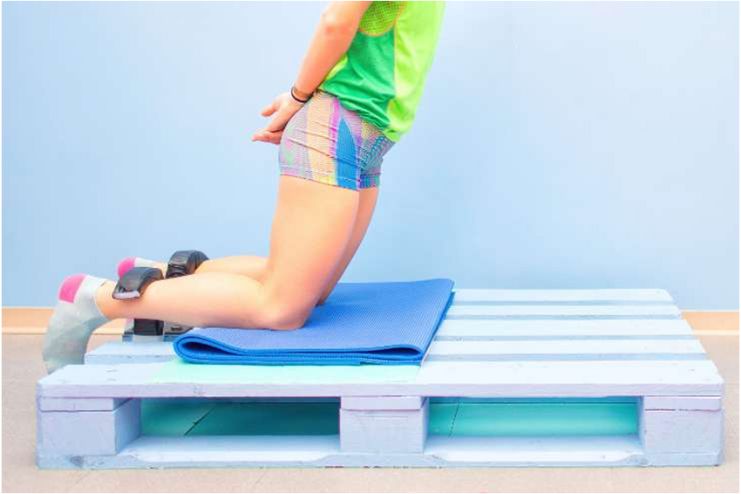
- Get on your knees and place your feet beneath a stable, motionless object, such as a couch. If it’s more convenient, have someone grip the backs of your ankles.
- Lean forward toward the floor slowly while crossing arms across the chest.
- Contract your leg muscles and return to the beginning position when you can no longer drop without losing control.
How to Reduce Cankle Weight
Although there are no quick fixes for instantly thinner ankles, you can take steps to lose body fat elsewhere, which will gradually find its way to your ankles (depending on your genetics).
The basic formula for losing weight and fat is straightforward: Eat more nutrient-dense foods to cut calories, add more aerobic exercise, and engage in strength-training activities.
Common Mistakes to Avoid When Exercising for Cankles

It’s simple to make blunders when trying to lose weight around the cankles, which may hinder your success. Poor form is a typical mistake resulting in inadequate outcomes and damage.
- This includes bending over during workouts or using the wrong technique. Always control each movement, maintain an upright posture, and use your core.
- Another error is overtraining or performing too many lower-leg activities without adequate recovery. It takes time for muscles to heal and get stronger. To prevent burnout or strain, balance your activity with rest days and give your muscles time to heal.
- Lastly, paying attention to other bodily components may halt advancement. Targeting cankles requires general fat loss, something you’re missing out on if you only concentrate on your legs and ignore full-body exercises. Include full-body workouts such as strength and aerobic training to get the best effects on your entire body.
Conclusion
Exercise consistency and a well-rounded strategy are key to getting toned legs and minimizing cankles. When incorporated into a comprehensive training program, these nine focused exercises can help define and shape your legs and enhance your general health. Remember that you must support your efforts with good habits like eating a balanced diet, drinking plenty of water, and getting adequate sleep. Consistency is key—stick with your program, and you’ll notice lasting results with time.
-
July 2017Written by Prajakt
-
Dec 2024Edited by Ankita
References
- https://www.netmeds.com/health-library/post/5-proven-and-highly-effective-exercises-to-get-rid-of-those-cankles
- https://www.linkedin.com/pulse/10-fastest-way-get-rid-cankles-annette-lode-t9hgf
- https://www.livestrong.com/article/340096-exercises-to-get-rid-of-cankles/#google_vignette
- https://www.theveininstitute.com.au/the-ugly-truth-about-cankles/
- https://artlipo.com/what-causes-cankles/
- https://www.health.com/cankles-8649121
- https://www.medicalnewstoday.com/articles/cankles#treatment
- https://miaaesthetics.com/conditions/cankles/
- https://greatist.com/health/cankles#when-to-see-doctor
- https://www.healthline.com/health/fitness-exercise/how-to-get-rid-of-cankles#5-Jumping-rope
In this Article













